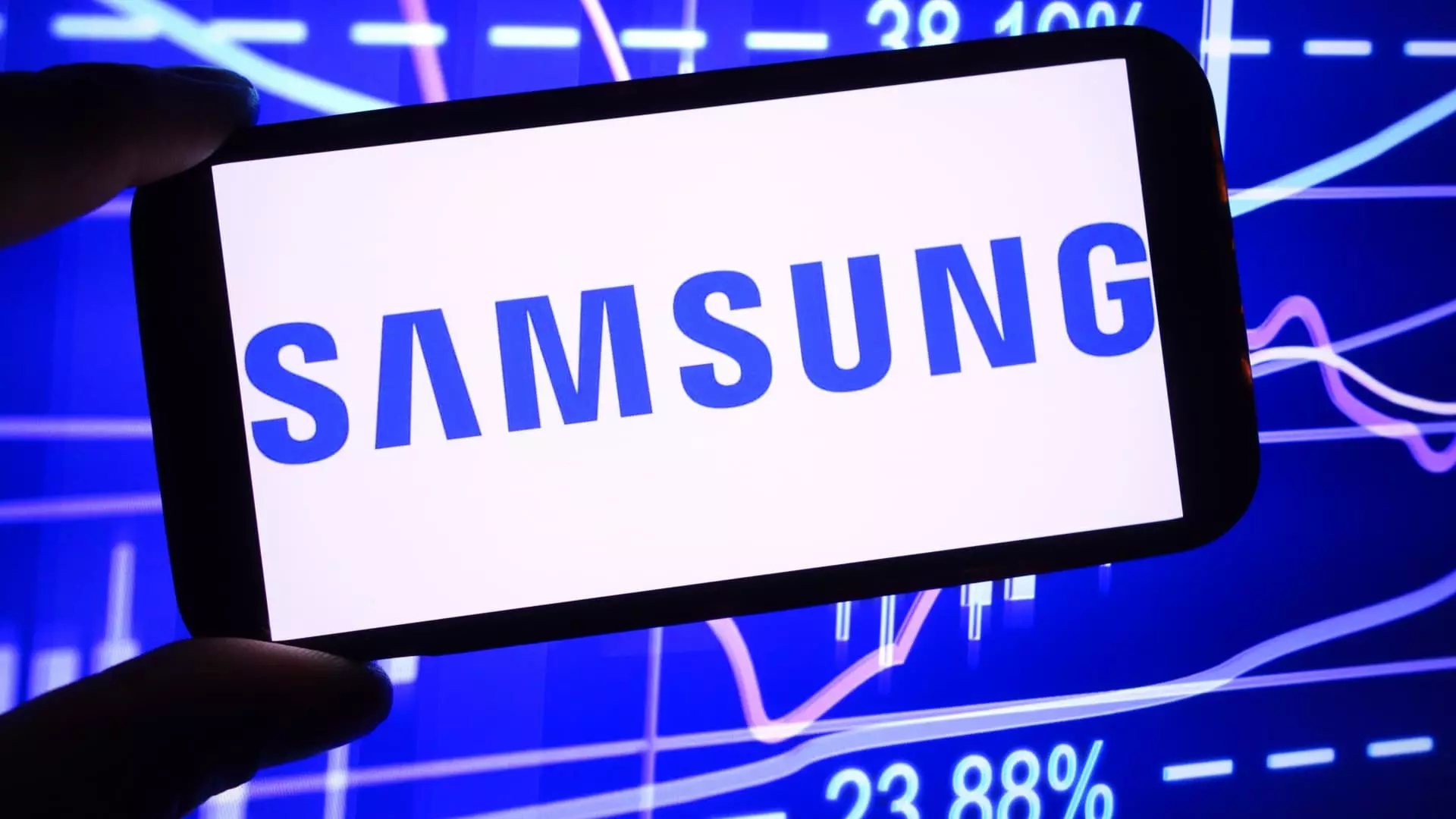Samsung Electronics, a major player in the tech industry, recently disclosed its financial results for the fourth quarter of 2023, which presented a mixed landscape of achievements and challenges. While the company reported fourth-quarter revenues exceeding expectations with a staggering 75.8 trillion Korean won (approximately $52.2 billion), its operating profit experienced a more than significant downturn. Operating profit fell sharply to 6.5 trillion Korean won, reflecting a nearly 30% decline quarter-on-quarter and a fragile performance amidst rising research and development (R&D) expenses, primarily in the company’s semiconductor segment.
In stark contrast, the annual metrics revealed positive growth. Samsung enjoyed a revenue increase of around 12% year-on-year and an astonishing 130% rise in operating profit compared to the previous year. Despite the culmination of these annual figures, the quarter-on-quarter numbers underline the current volatility in the market, triggered largely by soft demand and escalating operational costs.
Samsung’s assertions regarding the fourth quarter revealed the nuanced dynamics of its performance. The total quarterly revenue exceeded the company’s own guidance set at 75 trillion won, demonstrating a degree of resilience in the face of external pressures. However, the decline in operating profit signals deeper challenges faced by the company, particularly in its semiconductor business—an area that significantly contributes to its financial health.
The competitive landscape was further complicated by the emergence of new players and advancements in technology, notably from China. Companies like DeepSeek have introduced AI models that pose competitive threats, leading to a recalibration of strategies across the sector. Samsung’s position as a leader in memory chips, which are essential for various devices, including laptops and servers, requires it to not only maintain but enhance its market position through innovation and adaptability.
Samsung’s semiconductor division, despite achieving a record fourth-quarter revenue of 30.1 trillion Korean won due to robust demand for advanced memory solutions aimed at AI applications, revealed a concerning trend. Operating profit took a hit, reflecting more than a 25% fall from the previous quarter, attributed to heightened R&D expenditures geared toward securing future technology leadership. The focus on cutting-edge production capabilities, especially in high bandwidth memory (HBM), which has recently gained traction, underscores the strategic pivot Samsung needs to make to align with current market demands.
Industry analysts have noted that while Samsung maintains a strong position in certain segments, it has lagged behind competitors like SK Hynix in the critical HBM sector. Eric Ross, from Cascend Securities, highlighted this shift in market dynamics, indicating that Samsung’s delayed entry into high-performance computing applications has allowed rivals to leap ahead, thus amplifying pressures in the DRAM sector. The need to enhance portfolio offerings and address legacy products has become paramount as the market shifts toward high-value applications.
Smartphone Division and Future Outlook
Samsung’s mobile experience and networks divisions reflected a concerning trend with reported declines in both sales and profits in the latest quarter. This downturn can be partially attributed to the saturation effects seen after the launch of flagship models, which initially spurred robust sales. The consolidated revenue for this segment was 25.8 trillion won, with an operating profit of 2.1 trillion won.
Yet, on a broader scale, the annual performance showed significant promise, driven by the successful release of the Galaxy S24 series, which prominently featured AI capabilities. This alignment with technological advancements has aided Samsung in capturing market share, inching closer to Apple in the premium segment of the smartphone market. Looking ahead, Samsung remains optimistic about revitalizing growth through the upcoming launches of its new flagship models, particularly the Galaxy S25 series.
Strategic Directions and Future Challenges
Samsung has laid out ambitious plans to fortify its technological and product advantages, particularly in AI-driven smartphones and premium devices. As the company navigates through the current market vulnerabilities, the focus remains on innovative product development and leveraging emerging technologies to cater to evolving consumer needs. The vision for 2025 indicates an expectation of recovery in memory market demand and a pivot towards high-value product offerings.
Despite the anticipated challenges in the current quarter, Samsung’s strategic intent to drive growth through premium segments and AI integration highlights a proactive approach to market conditions. The company’s journey exemplifies a crucial moment of transformation within the tech industry, underscoring the need for agility, innovation, and resilience in an ever-evolving market landscape.

